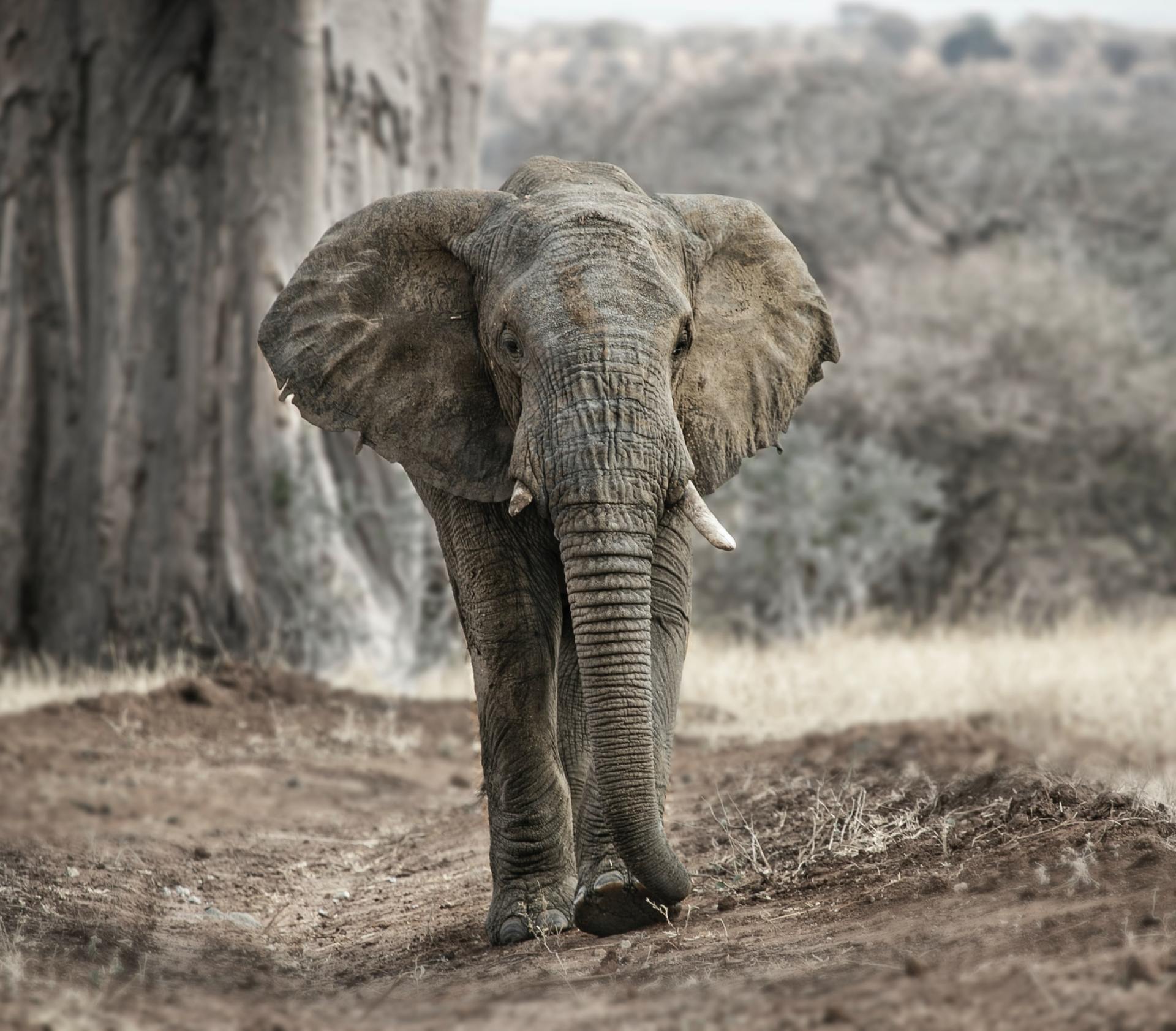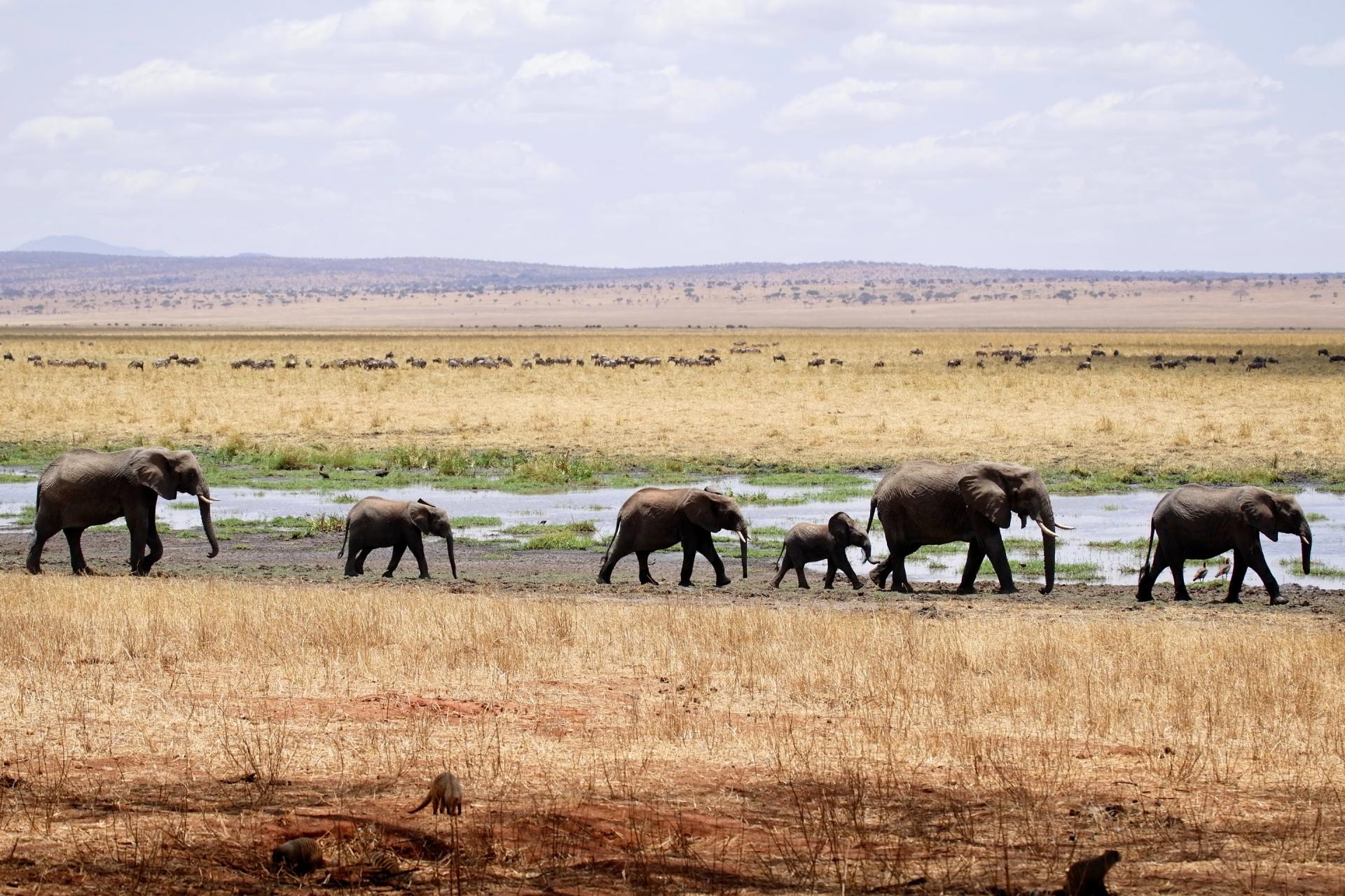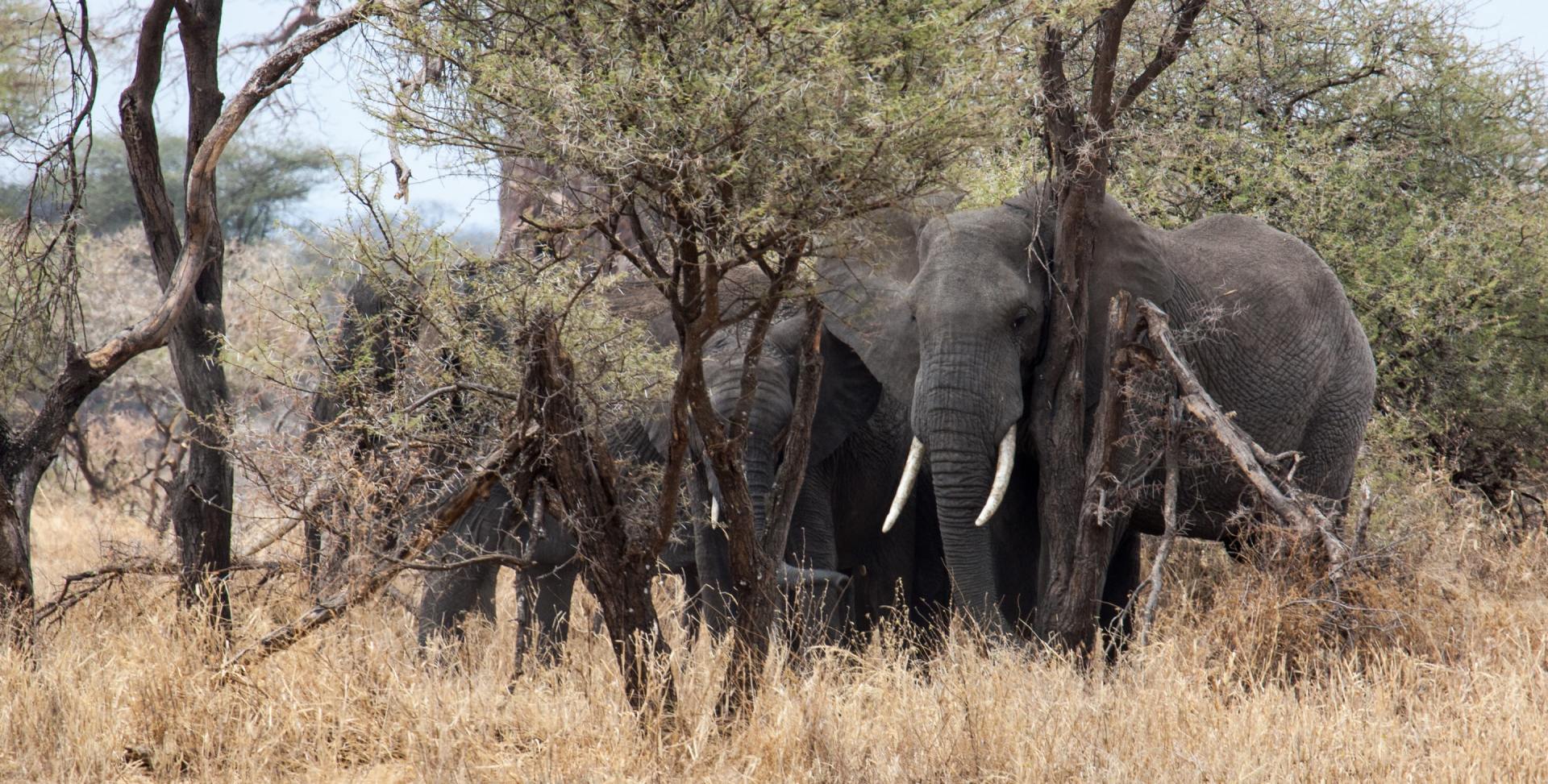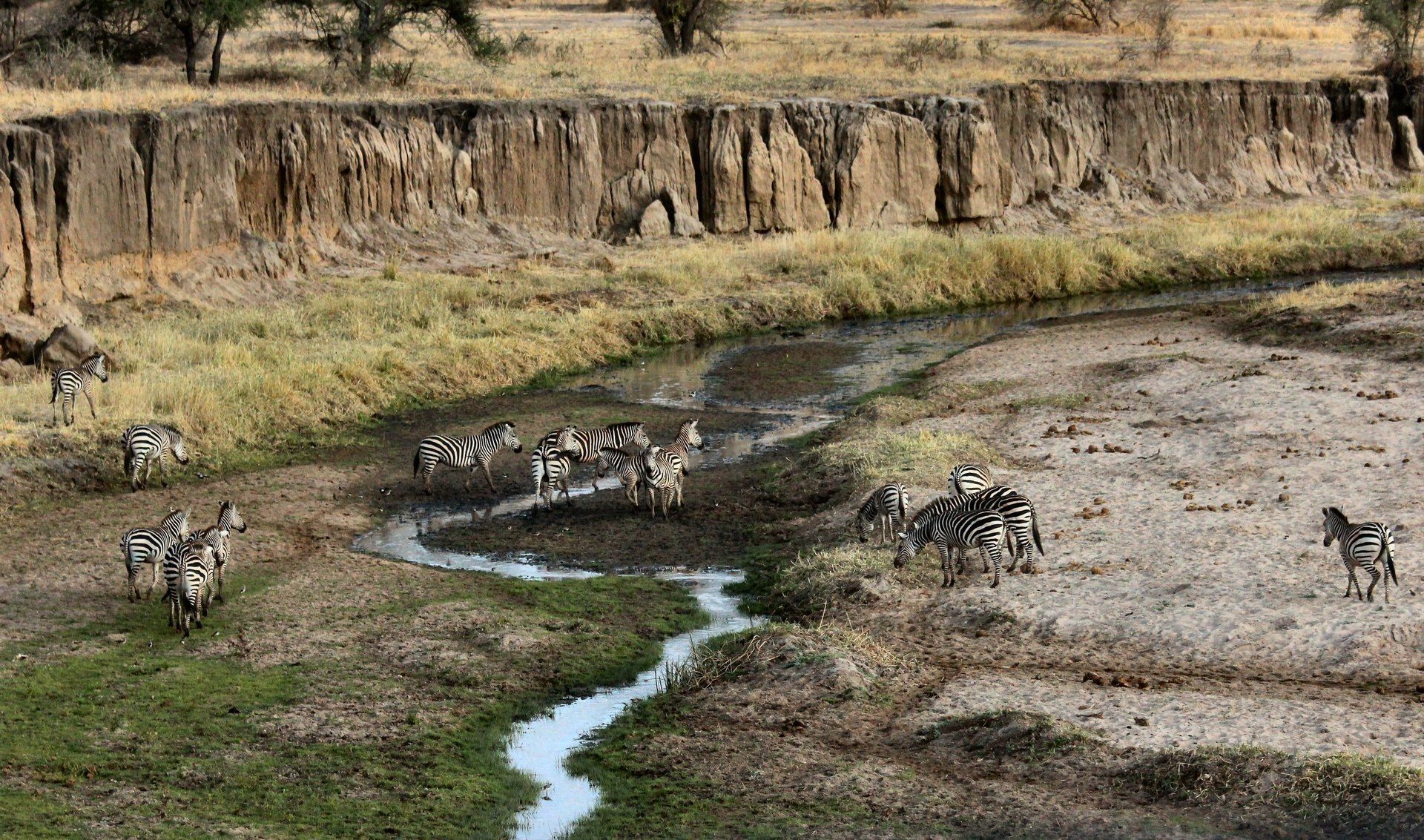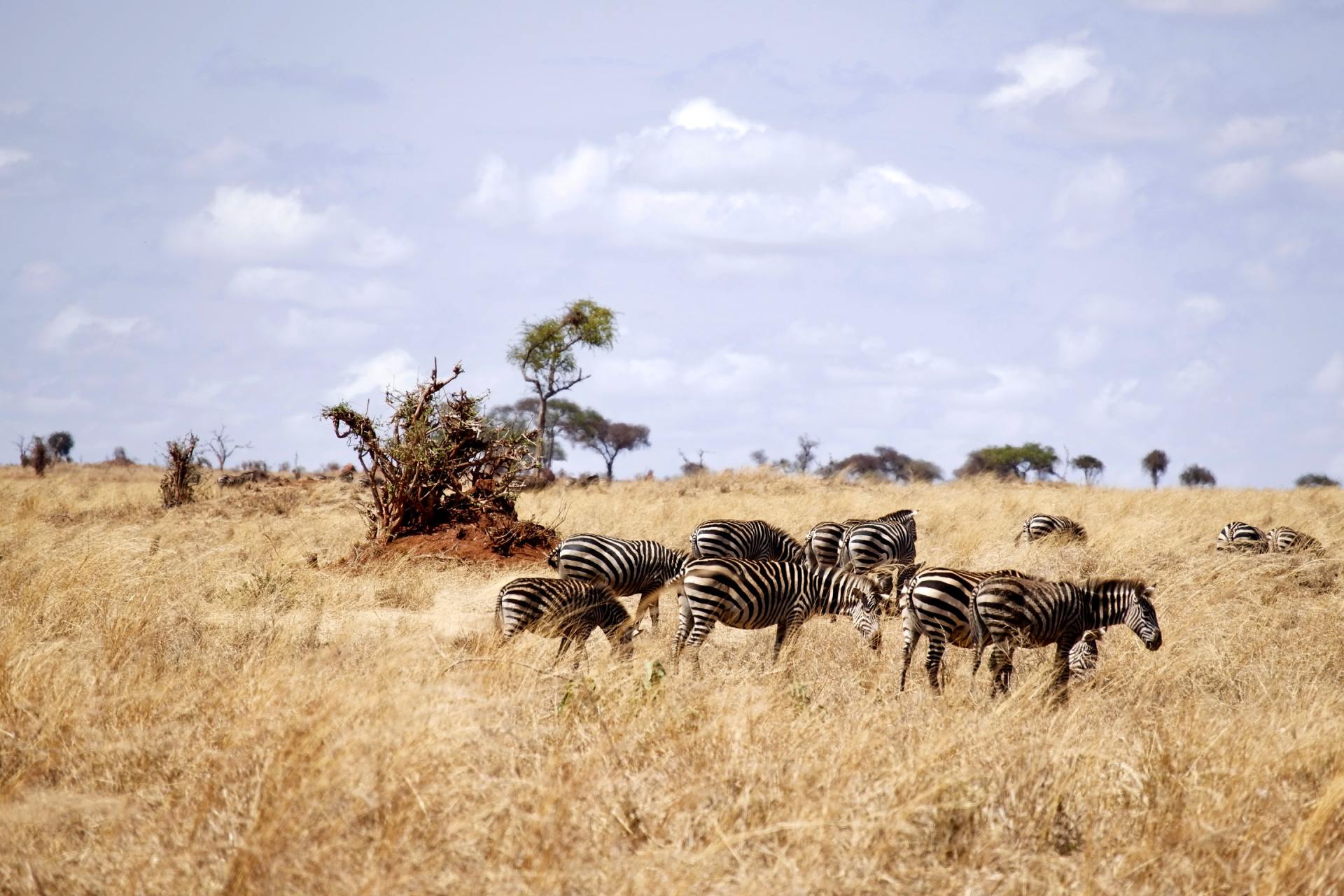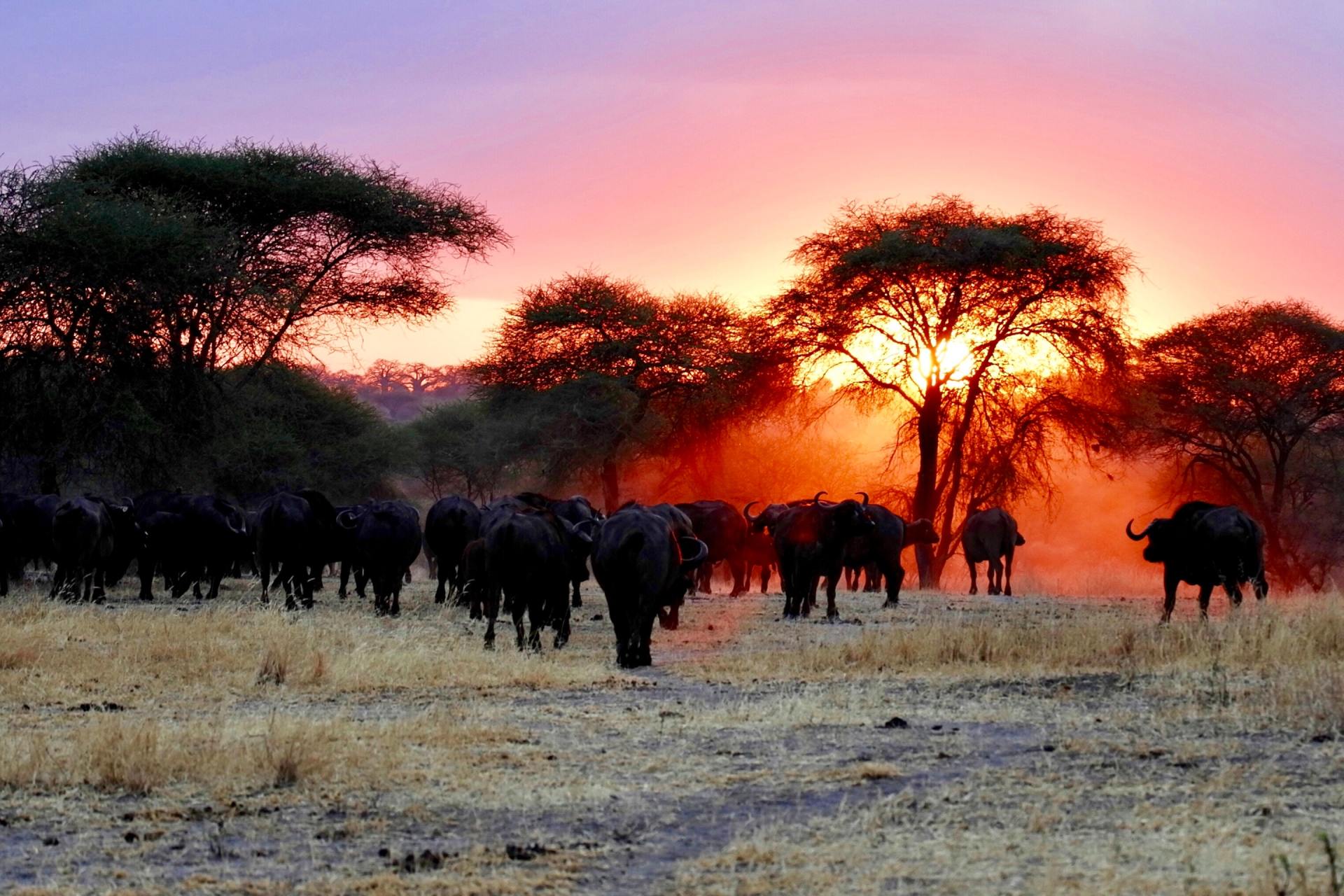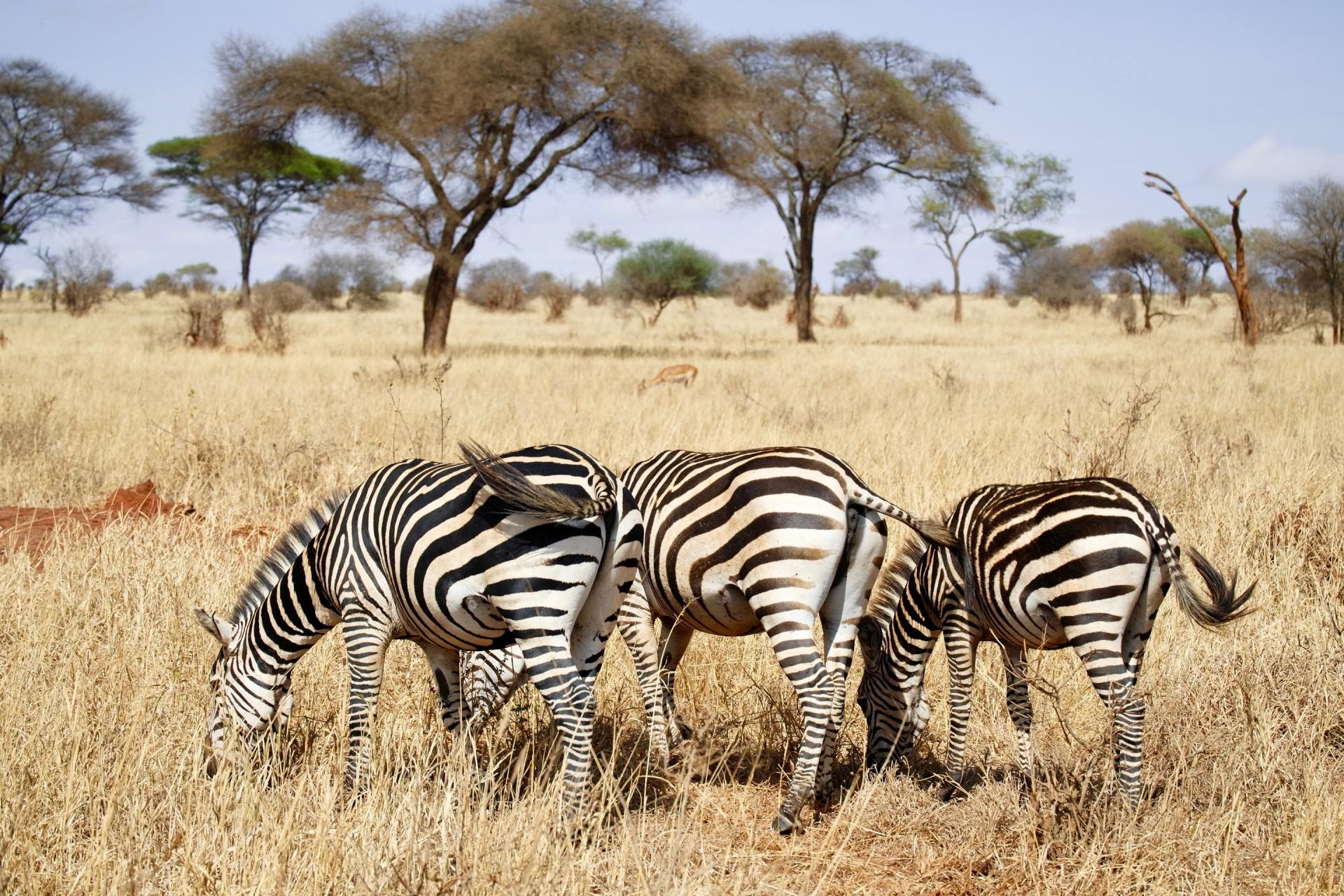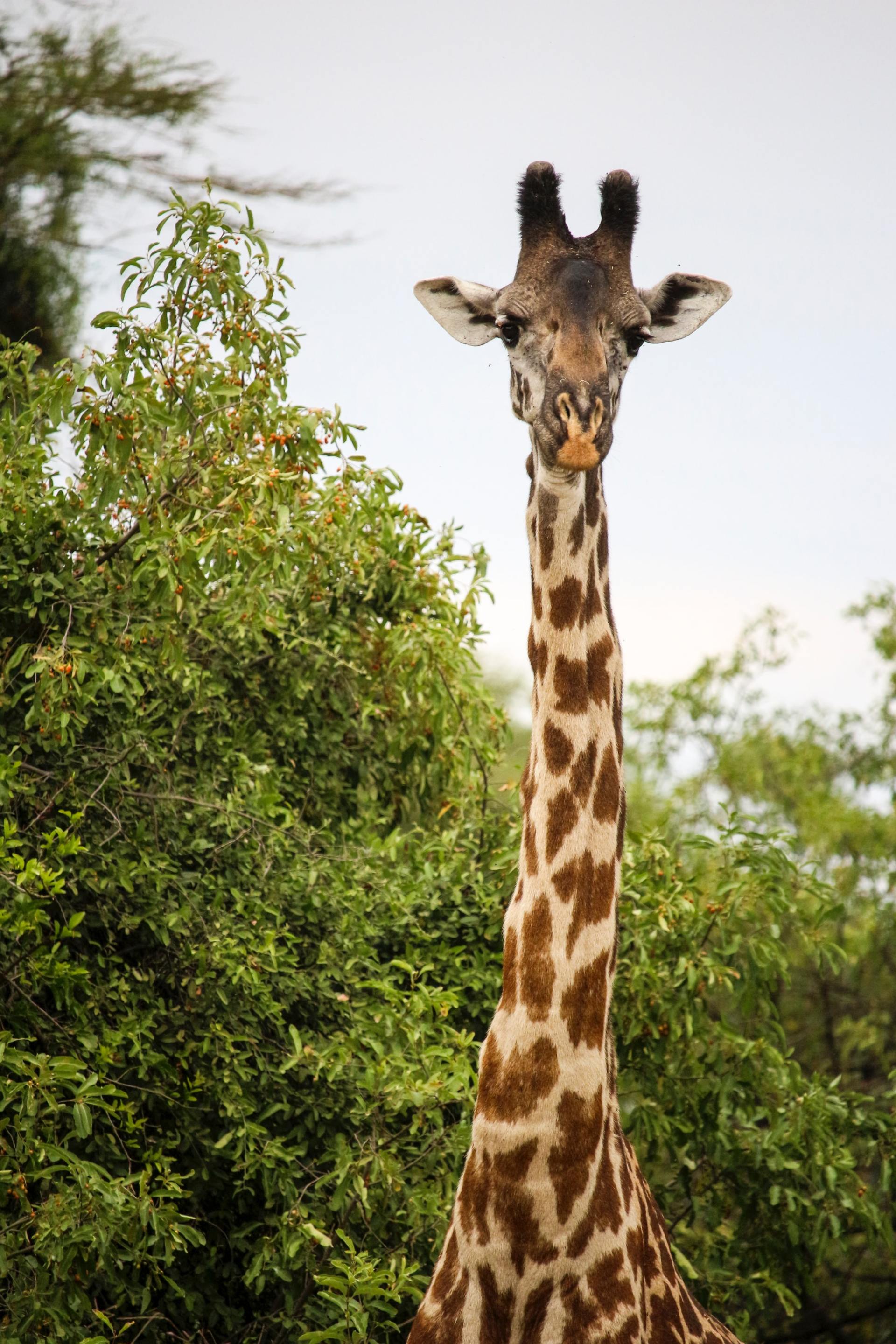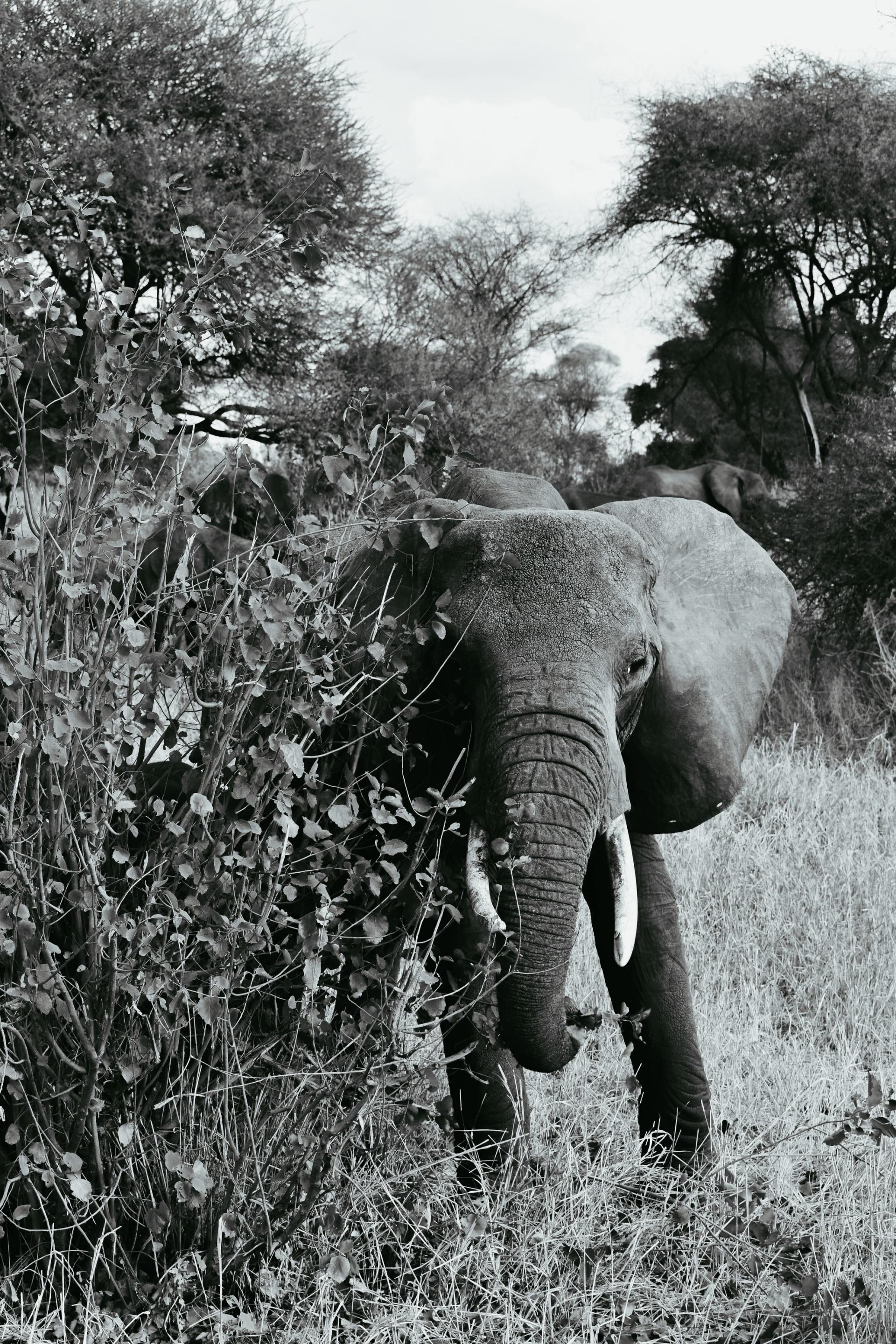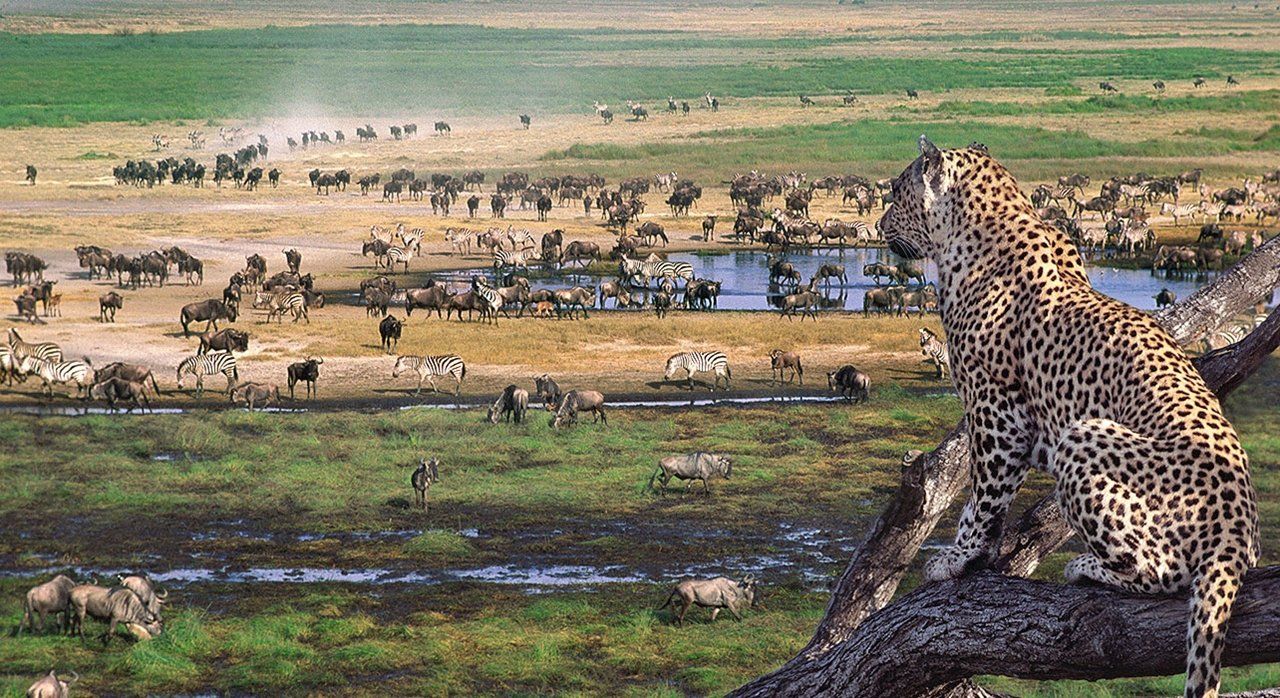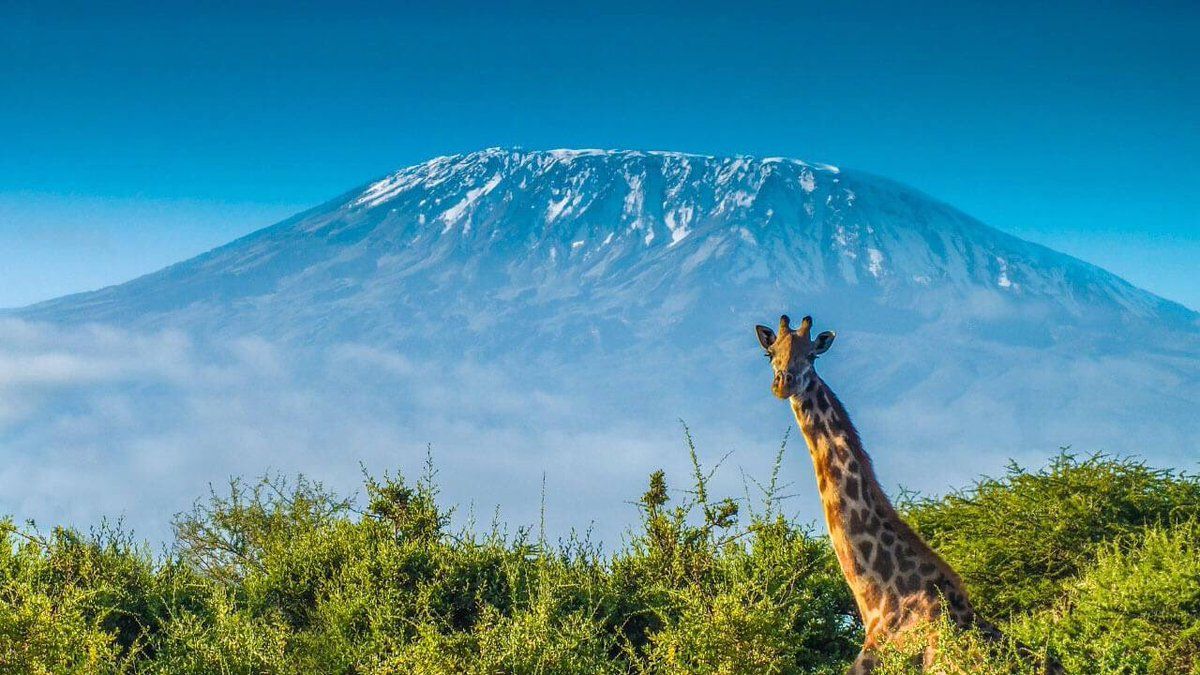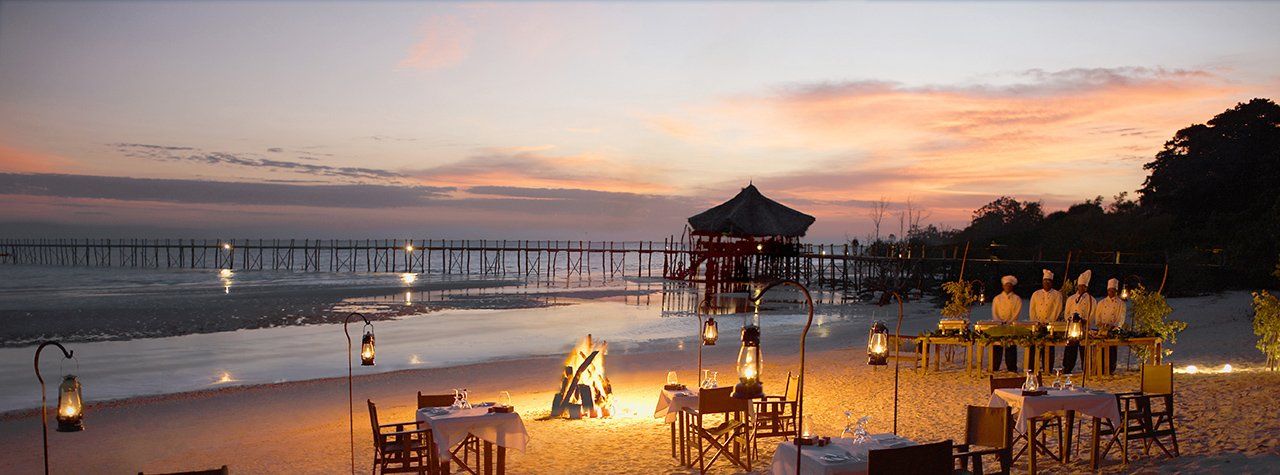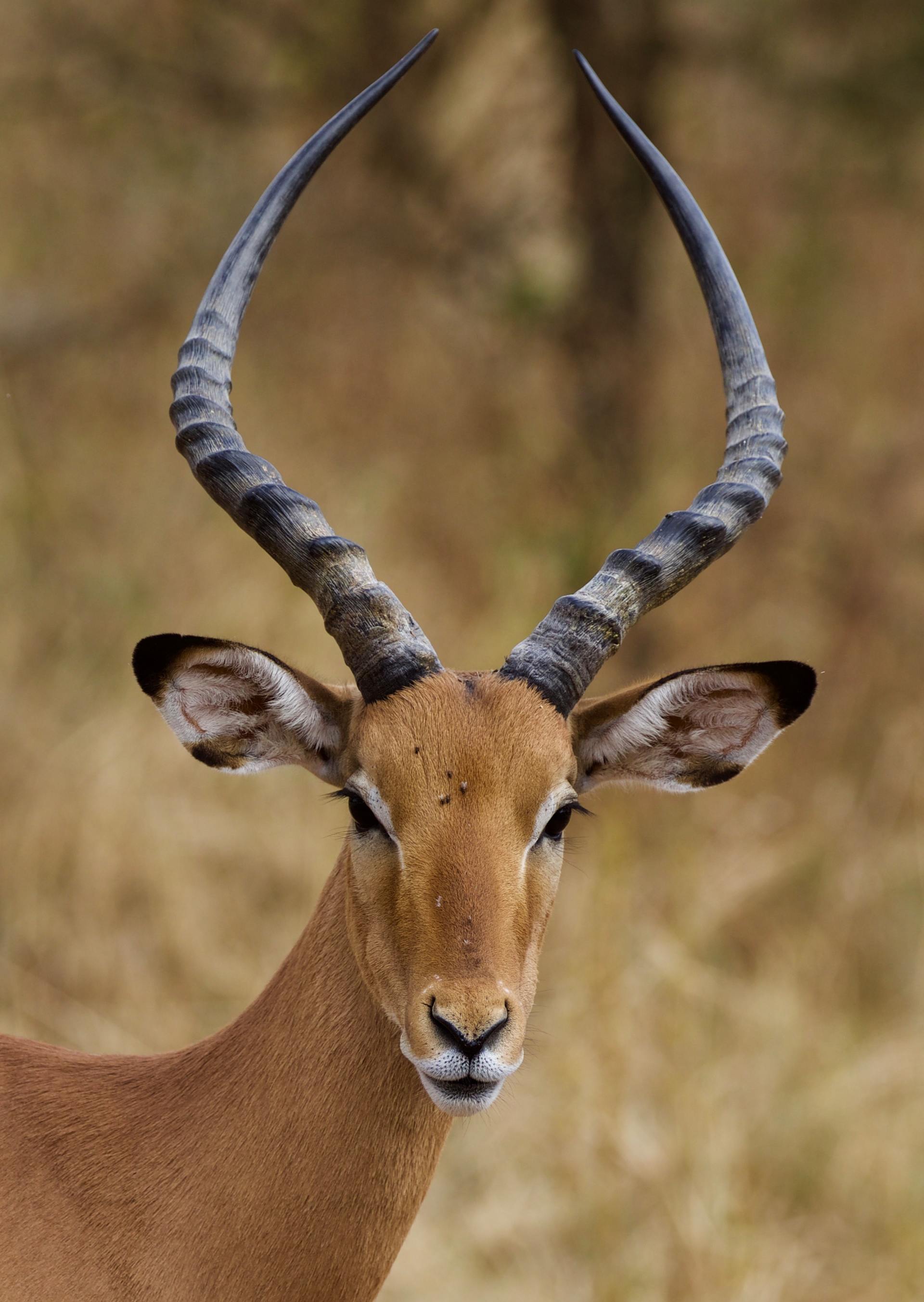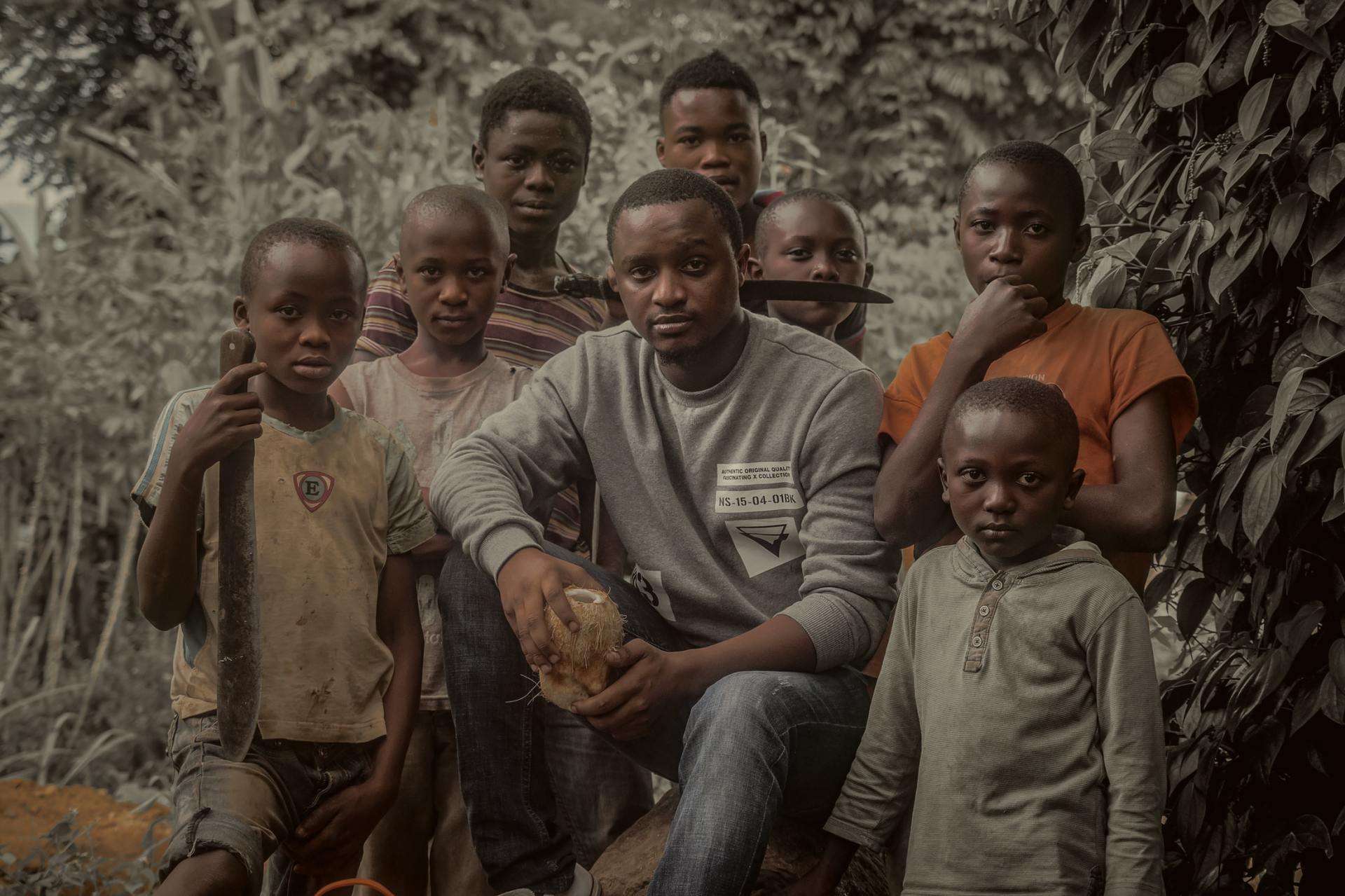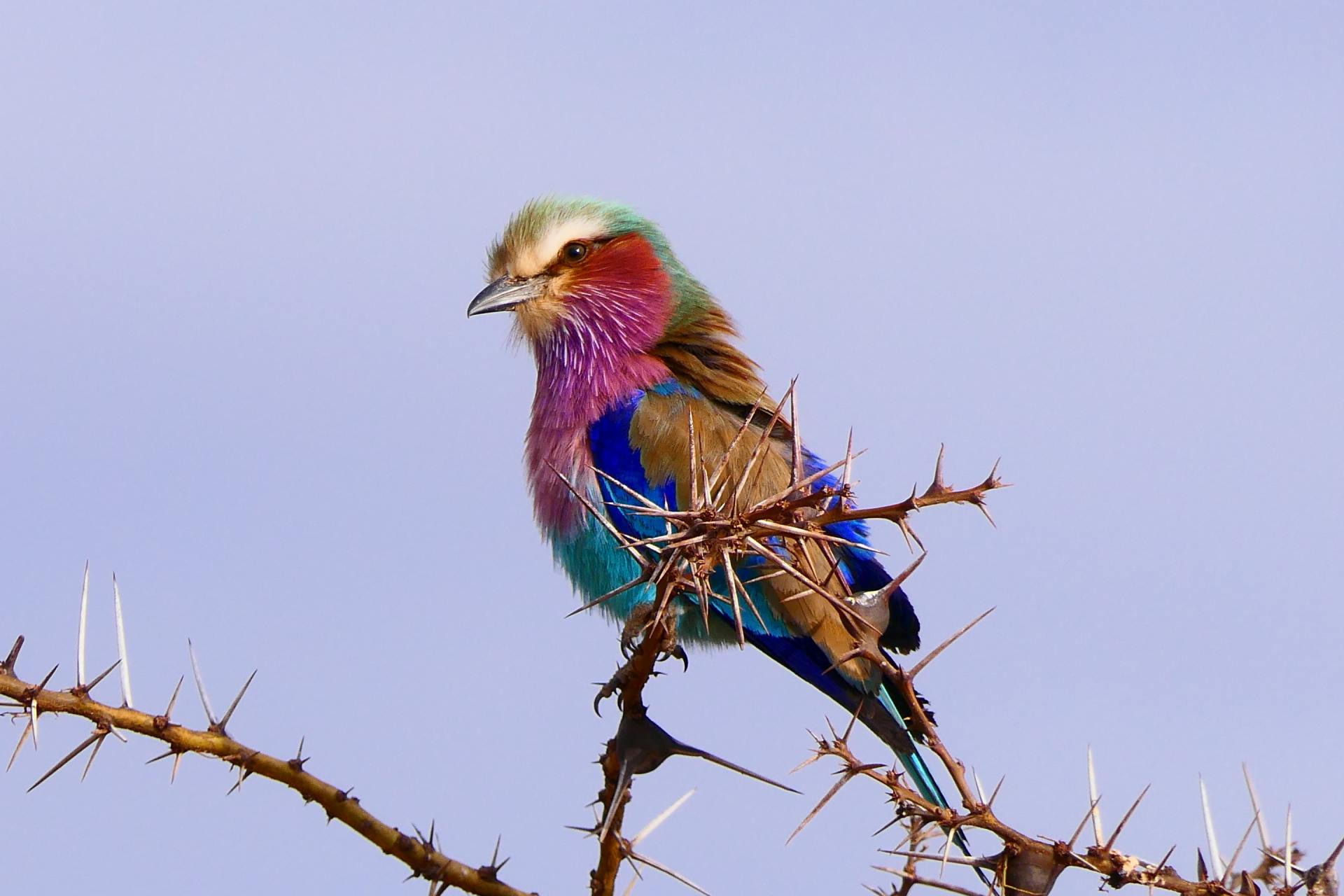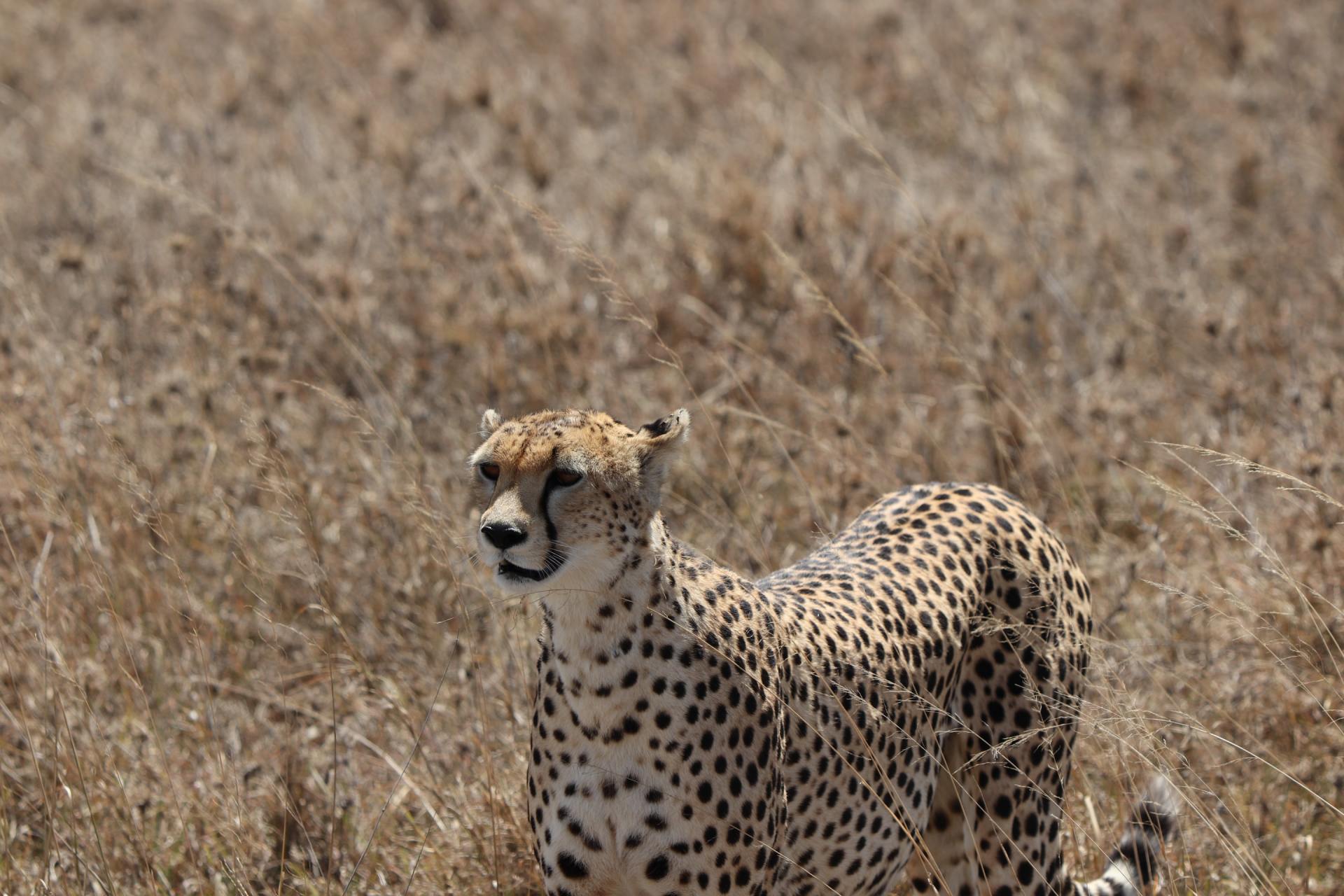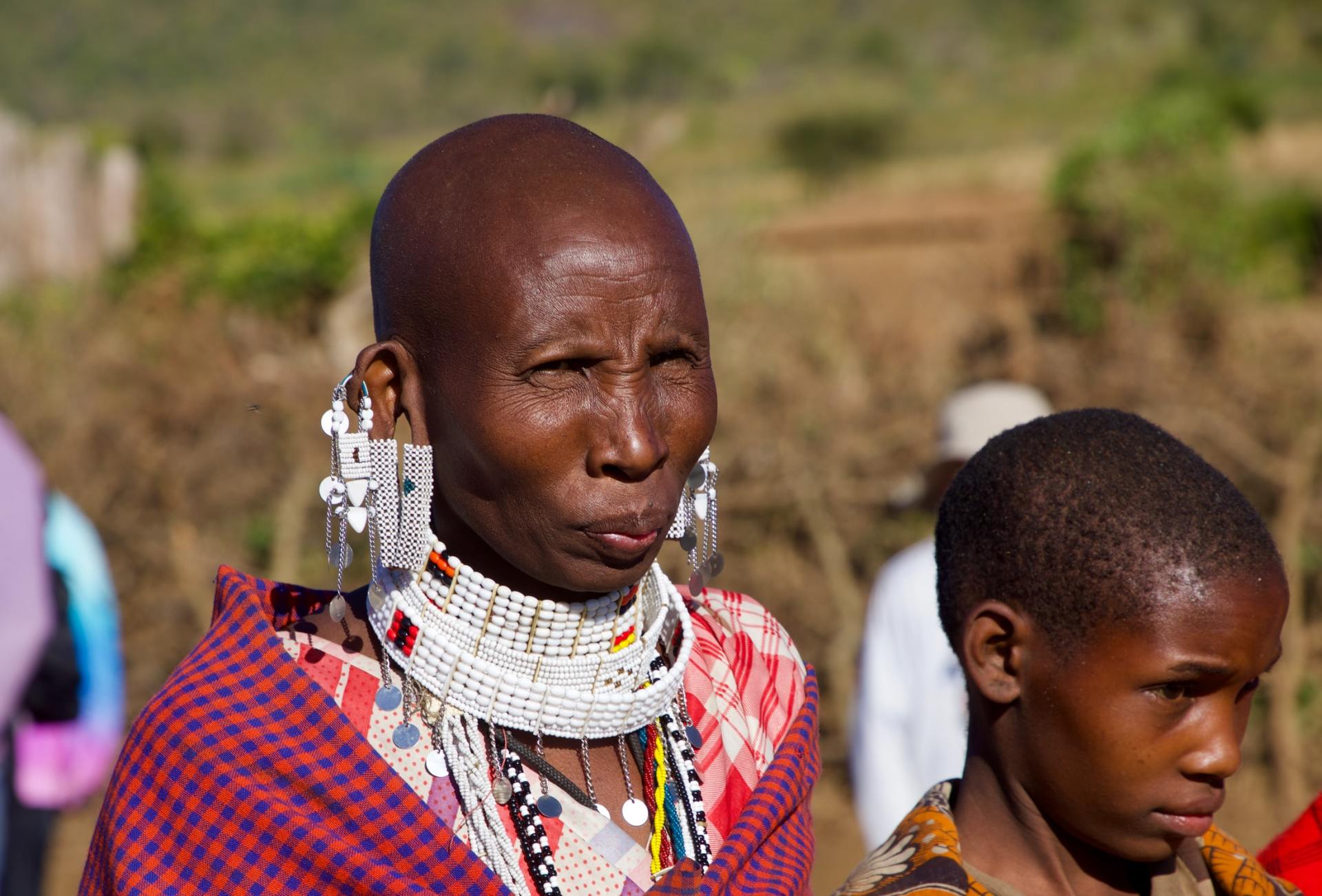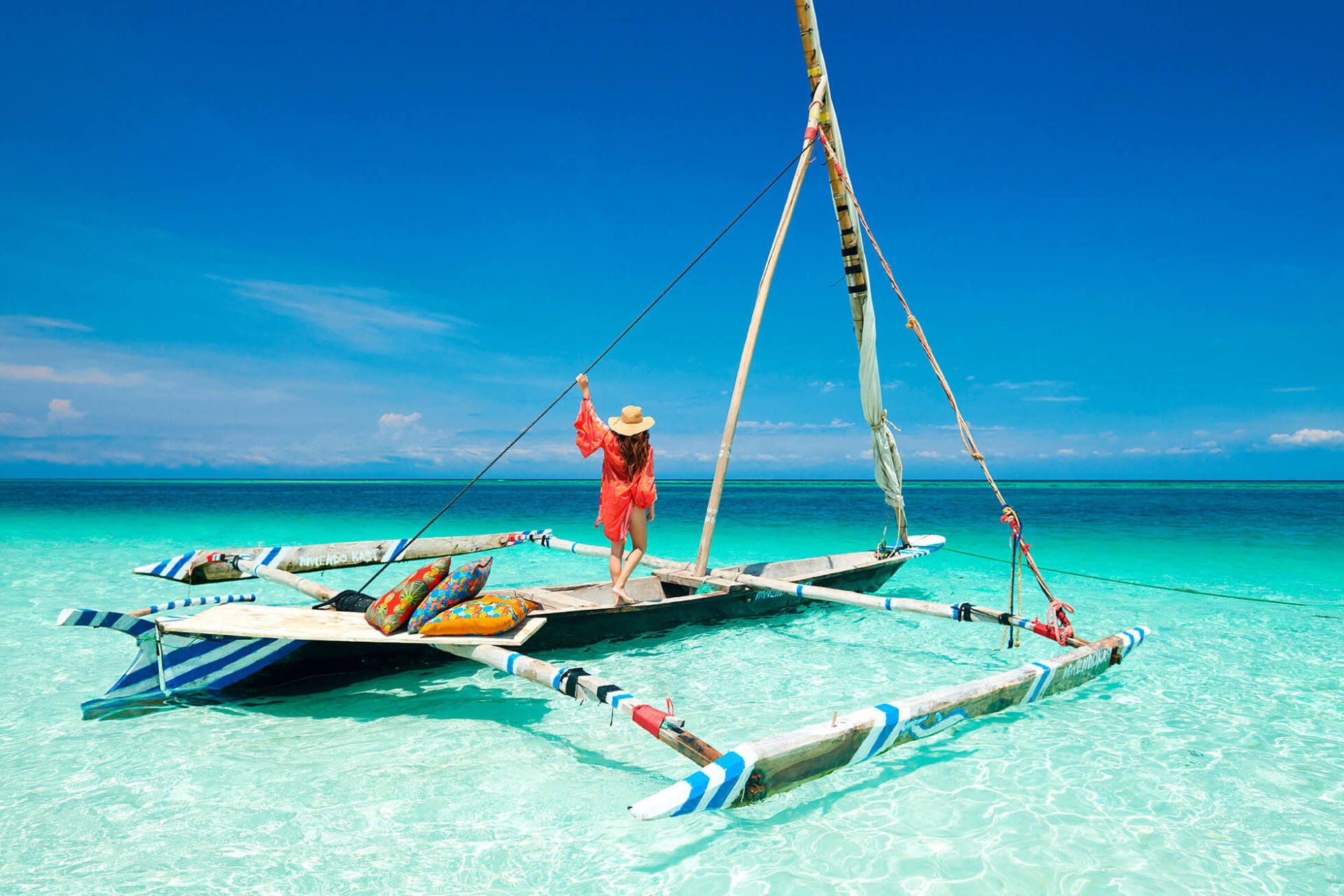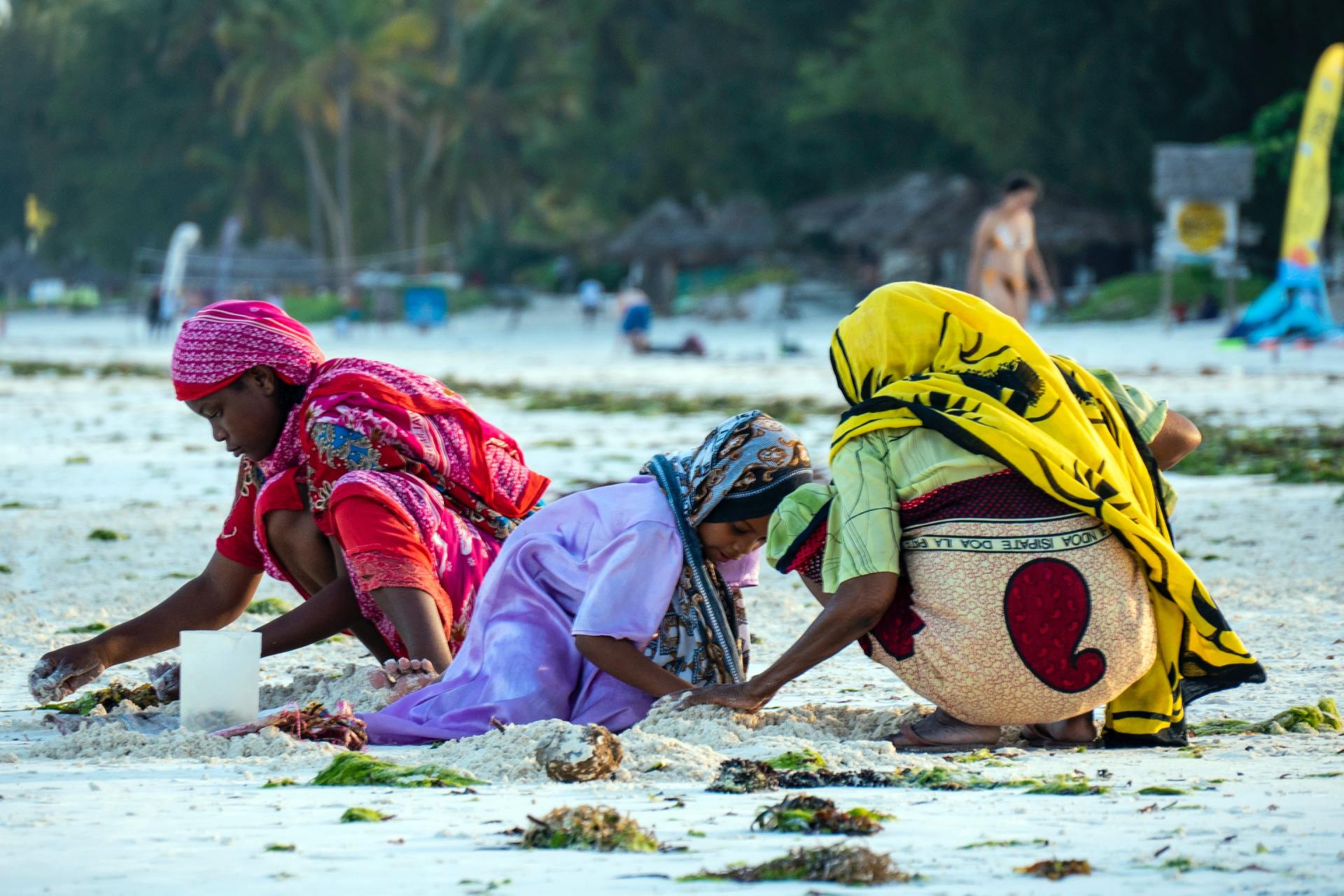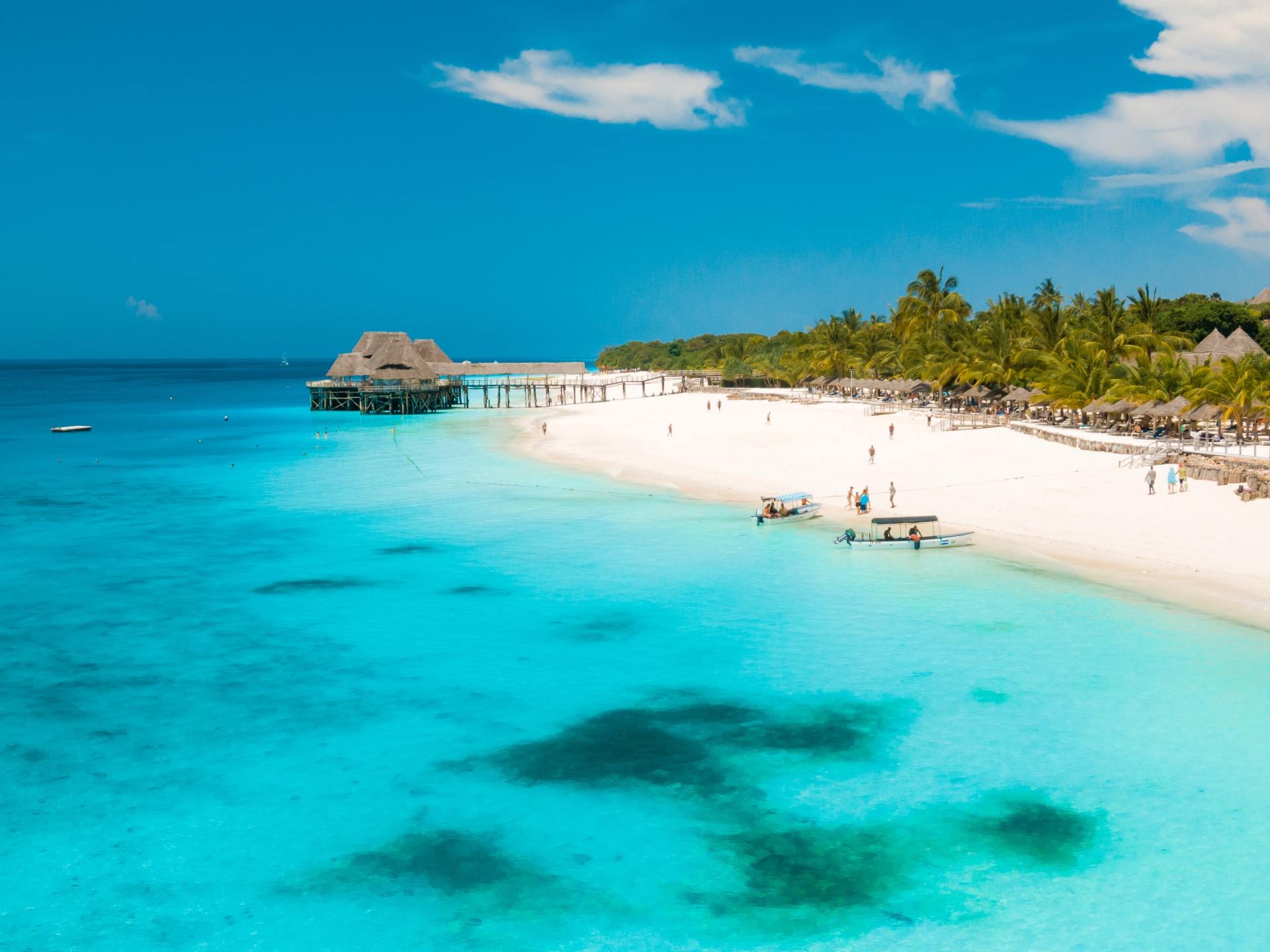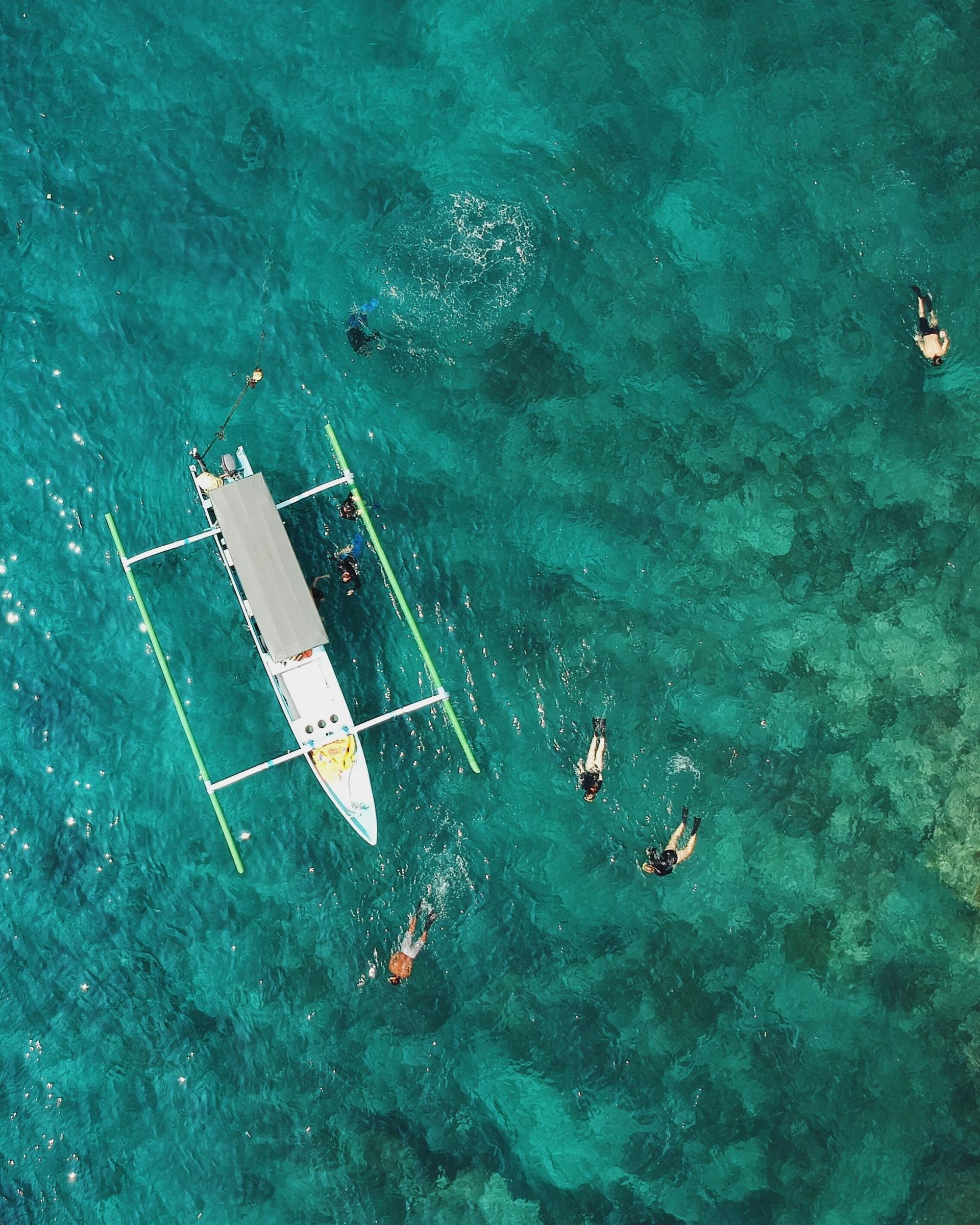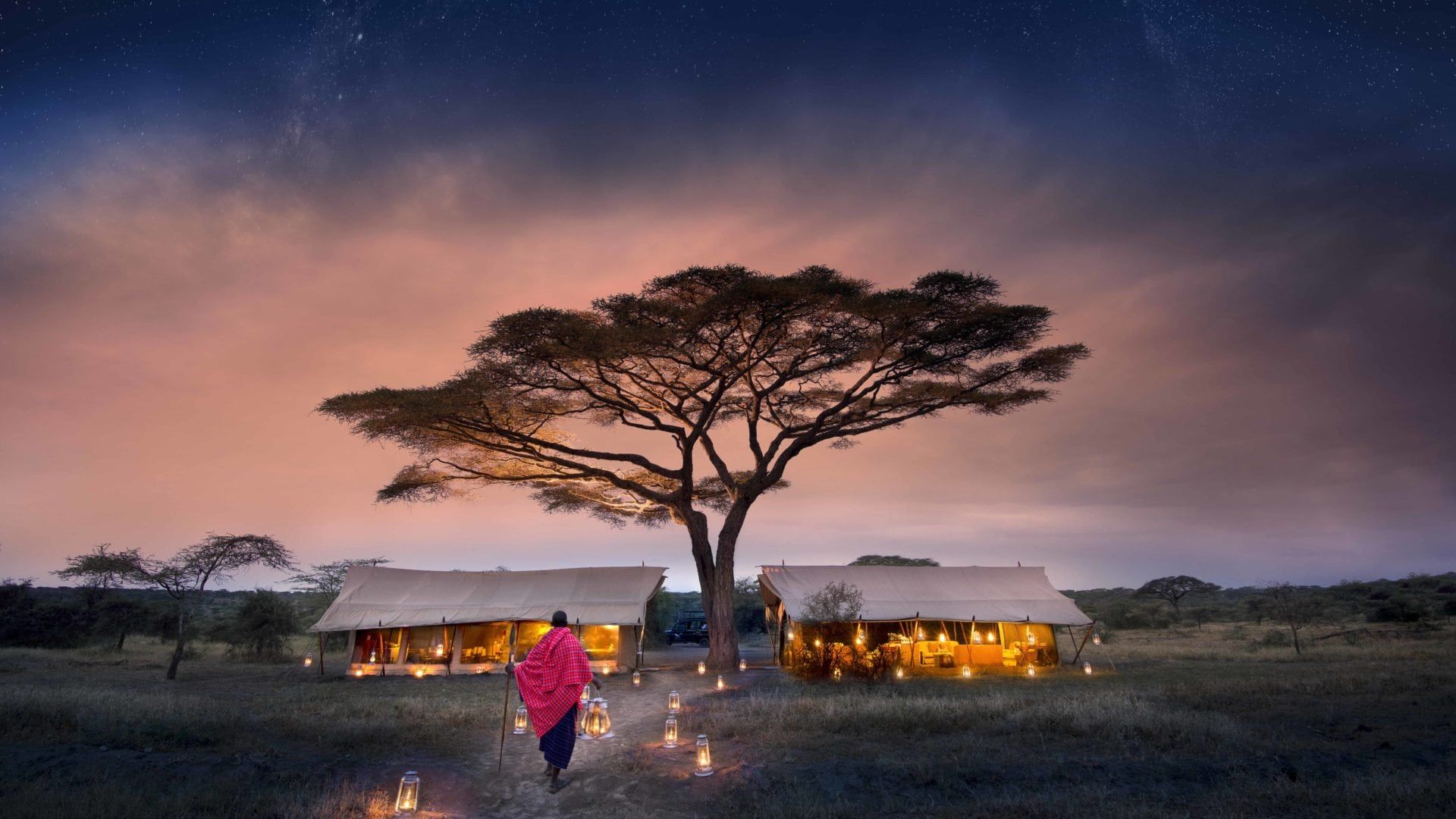Winter (June - September): The best time to go to Tarangire National Park is during the dry season from June to September. The Tarangire River is perennial and flows throughout the year, but during the dry season of winter, it becomes the only source of water in the entire region. Animals arrive from all neighbouring parks, drawn by this precious water source, and for these months Tarangire boasts the densest animal population outside the Serengeti ecosystem with spectacular wildlife sightings. Daytime temperatures remain very mild and will not dip below ±15°C / 60°F, with daily highs around 25°C / 77°F.
We recommend you pack warm clothes for your safaris, as dawn and dusk are the times when you will most notice the cold.
Summer (January - March): January to March are the proper summer months and our second favourite time to visit Tarangire National Park. The average temperatures are around 27°C / 80°F, and rain is extremely rare. Wildflowers are blooming due to the spring rains and baobabs experience a few weeks of foliage, making summer a magical time to experience this park.
Spring (November - December): The arrival of spring brings short rain showers, which peak in November. Rain is mostly contained to short late afternoon showers, so this does not truly impact your game viewing. Temperatures are lovely and pleasant, but it does get humid, which can be mildly uncomfortable. While the migratory animals leave the park around November, plenty of territorial animals remain, such as lions and elephant bulls, making for decent game watching.
Autumn (April - May): Autumn is our least favourite time for a visit to Tarangire National Park as this is when the “long rains” arrive. While of course these rains are crucial to the survival of both animal and plant, they do not offer the best safari conditions. Not only do the autumn months bring plenty of rain, but nature rejuvenates itself to such a wonderful extent, that grasses grow meters tall and anything smaller than an elephant can be hard to spot. On the plus side, however, rates are at their lowest during this season, and the habitual hordes of tourists are nowhere to be seen, so you do benefit from a much more intimate experience.




